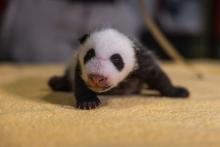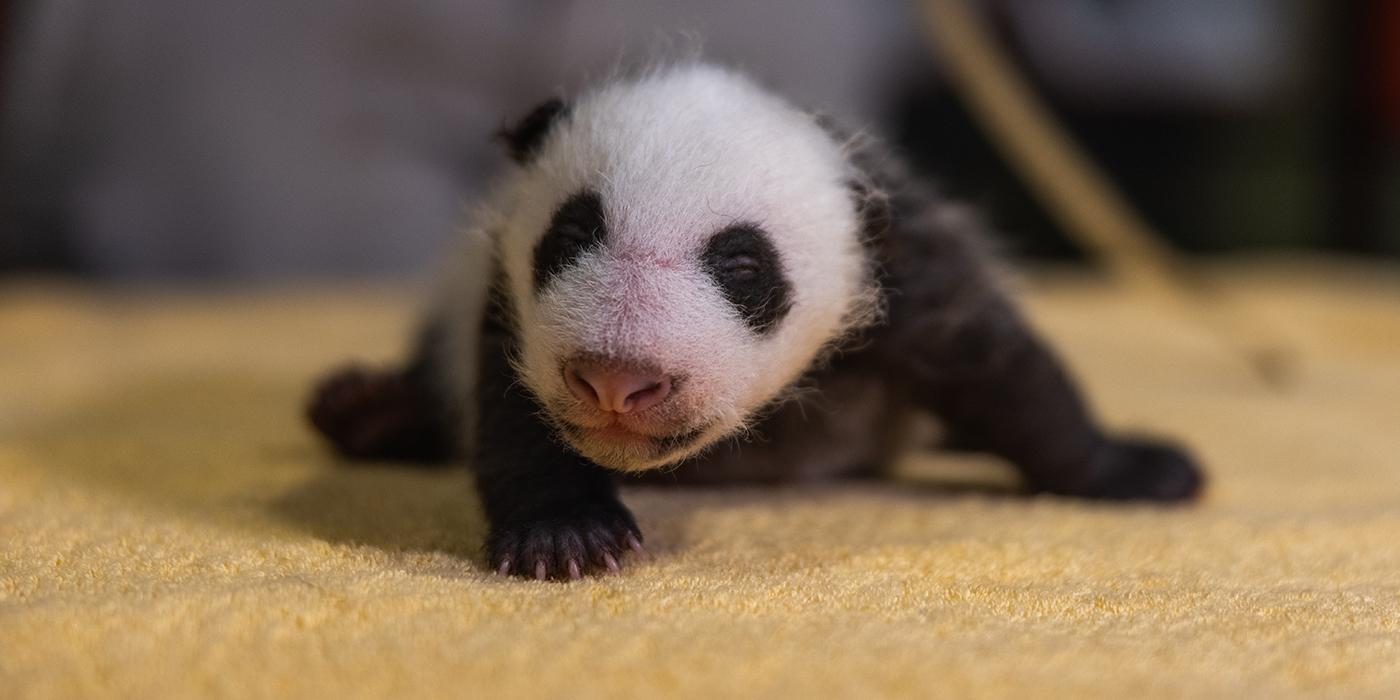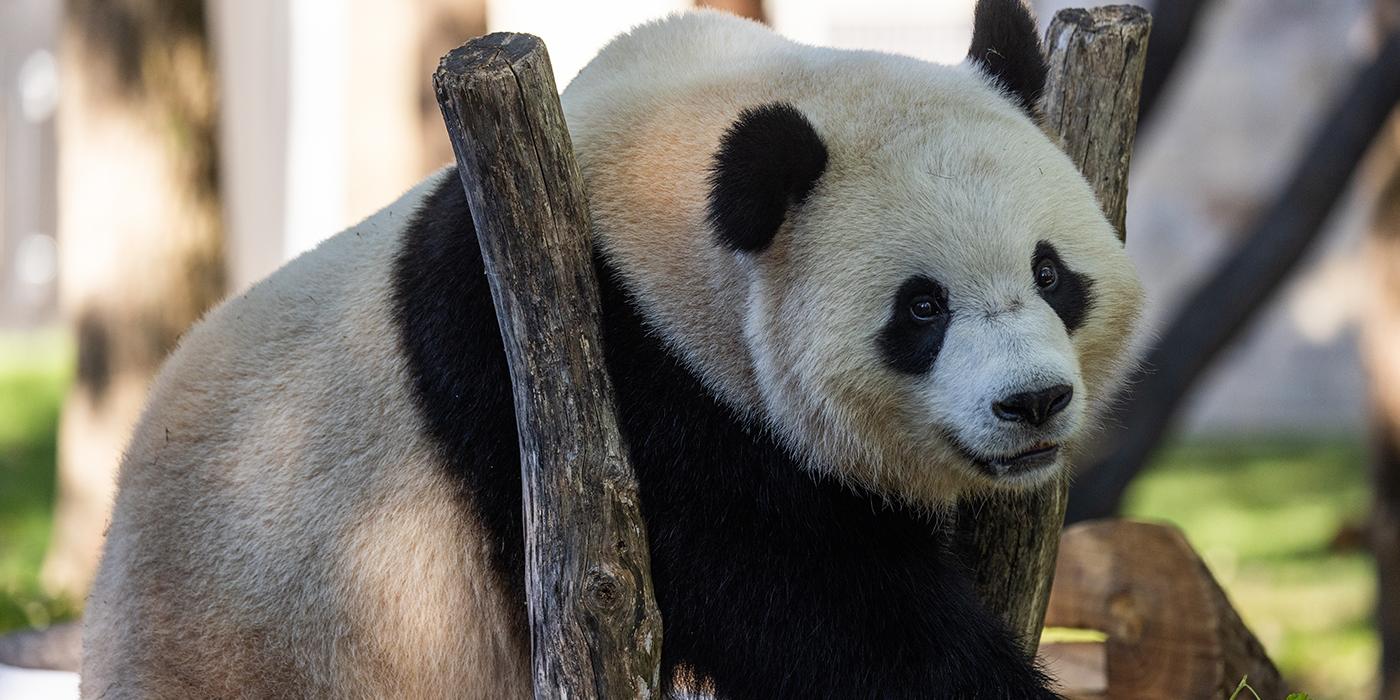It’s a Boy!
Smithsonian’s National Zoo’s Giant Panda Cub Is Male
The Smithsonian’s National Zoo’s 6-week-old giant panda cub is a male, Smithsonian Conservation Biology Institute (SCBI) scientists confirmed. During the cub’s first veterinary exam Sept. 19, Zoo veterinarians obtained a swab from his cheek for DNA analysis. Outwardly, male and female cubs appear similar at birth, so a genetic test was the most accurate way to determine the cub’s sex. Veterinarians brought the swab to SCBI’s Center for Conservation Genomics, where scientists sequenced a short fragment of the zinc finger protein gene. The X and Y chromosomes both have this gene, with slightly different DNA sequences. Scientists determined that the swab sample taken by the Zoo’s veterinarians has both sequences present—confirming that the cub is male. A painting created by male giant panda Tian Tian (tee-YEN tee-YEN), the cub’s father, was used to reveal the sex of the cub to giant panda keepers and fans online.
The Zoo will continue to provide updates on the cub on its website, on social media using the hastags #PandaStory and PandaCubdates and in the Giant Panda e-newsletter. Giant panda fans can see the cub, mother Mei Xiang (may-SHONG) and Tian Tian via the Giant Panda Cam on the Zoo’s website.
Zoo veterinarians say that the cub appears to be healthy and strong. During a brief exam conducted by the panda team Oct. 1, keepers took the cub’s measurements. He weighed 3.6 pounds and measured 14 inches from nose to tail tip. His abdominal girth was 12.5 inches. Both of the cub’s eyes are starting to open. Keepers are encouraged by his progress.
At 22 years old, mother Mei Xiang is the oldest giant panda in the United States and the second oldest documented in the world to give birth. SCBI reproductive scientists and Zoo veterinarians performed an artificial insemination on Mei Xiang March 22 with frozen semen collected from Tian Tian, who turned 23 years old Aug. 27. This is the first time a zoo in the United States has experienced a successful pregnancy and birth via artificial insemination using only frozen semen. Zoo veterinarians confirmed evidence of a fetus on an ultrasound Aug. 14 and Aug. 17.
As a public health precaution due to COVID-19, the Smithsonian’s National Zoo and Conservation Biology Institute has updated its hours and entry requirements. The panda house at the David M. Rubenstein Family Giant Panda Habitat is currently closed to provide quiet for Mei Xiang and her cub. Asia Trail—including giant panda viewing—is temporarily closed to visitors for the scheduled repaving of walkways.
In addition to this cub, Mei Xiang has given birth to three surviving offspring: Tai Shan (tie-SHON), Bao Bao (BOW BOW) and Bei Bei (BAY BAY). Tai Shan was born July 9, 2005, and moved to China February 2010. Bao Bao was born Aug. 23, 2013, and moved to China in February 2017. Bei Bei was born Aug. 22, 2015, and moved to China in November 2019. As part of the Zoo’s cooperative breeding agreement with the China Wildlife Conservation Association, all cubs born at the Zoo move to China when they are 4 years old. The Zoo’s current cooperative breeding agreement expires in December 2020.
# # #
Related Species:
Image Gallery








